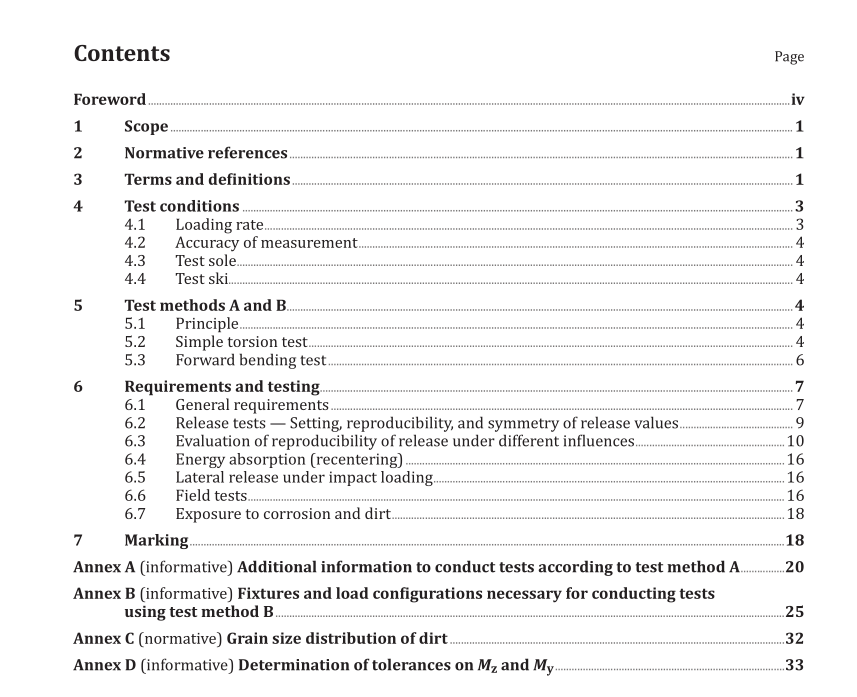ISO 9462 pdf download

ISO 9462 pdf download Alpine ski-bindings — Requirements and test methods
1 Scope
This International Standard specifies the main characteristics of ski-bindings and describes, as anexample, the test methods A and B.
This International Standard applies to ski-bindings for alpine skiing for children, juniors, and adults.
2 Normative references
The following documents, in whole or in part, are normatively referenced in this document and areindispensable for its application, For dated references, only the edition cited applies. For undatedreferences, the latest edition ofthe referenced document (including any amendments) applies.
ISO 5355,Alpine ski-boots – Requirements and test methods
ISO 8061, Alpine ski-bindings — Selection ofrelease torque values
ISO 9465, Alpine ski-bindings — Lateral release under impact loading — Test method
ISO 9838, Alpine and touring ski-bindings – Test soles for ski-binding tests
ISO 11087,Alpine ski-bindings — Retention devices – Requirements and test methods
3 Terms and definitions
For the purposes ofthis document, the following terms and definitions apply
3.1
alpine ski-binding
system to ensure firm connection between boot and ski, fixing the heel low for downhill skiingNote 1 to entry: The system releases the boot from the ski when certain loads reach preset values.
3.2
release
detachment of the boot from the ski by release of the mechanism that ensures the connection betweenboot and ski
Note 1 to entry: This release is only considered effective when all the loads due to the boot/ski connection havedropped to values which present no danger to the skier.
3.3
release valuesmaximum values of torques M, and My caused at the boot/ski connection by the two movements oftorsion and forward bending
Note 1 to entry: For the torques Mz and My see Figure 1.
Note 2 to entry: These values are generally adjustable on current bindings which have a scale and an indicatordisplaying the setting level.
Note 3 to entry: In the present state of the art, bindings are designed at least to release in torsion (+M-) and inforward bending.
3.4 reference value value, adjusted after a series of tests, used as a basis of comparison to evaluate the behaviour of the binding during the tests
Note 1 to entry: See 6.3.1
3.5 combined loading loading of the sole or ski in several directions at the same time, where one of the loads is the torque M z progressively applied to the sole until the binding releases Note 1 to entry: Each of the load combinations simulates a given situation, chosen within an infinite field of possibilities and simplified for the purpose of the tests. The main simplification being that the loads applied additionally to the release torque M z are held constant in value and direction during all the release process.









